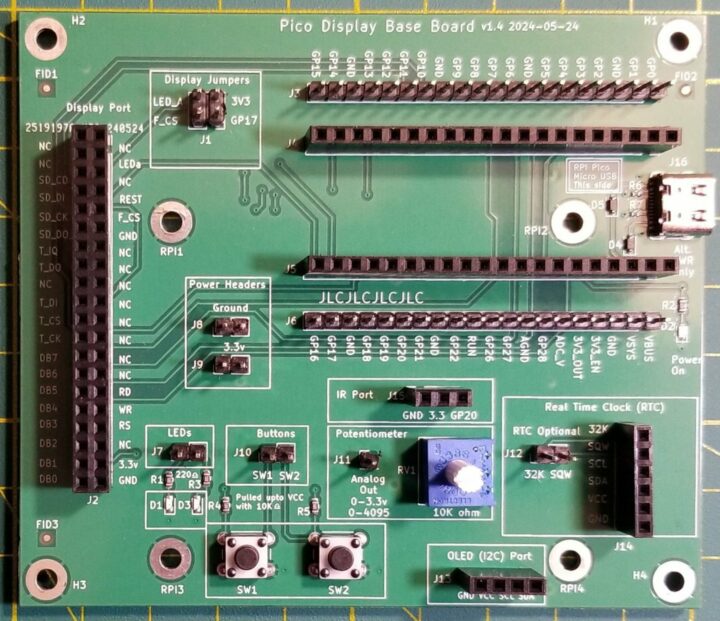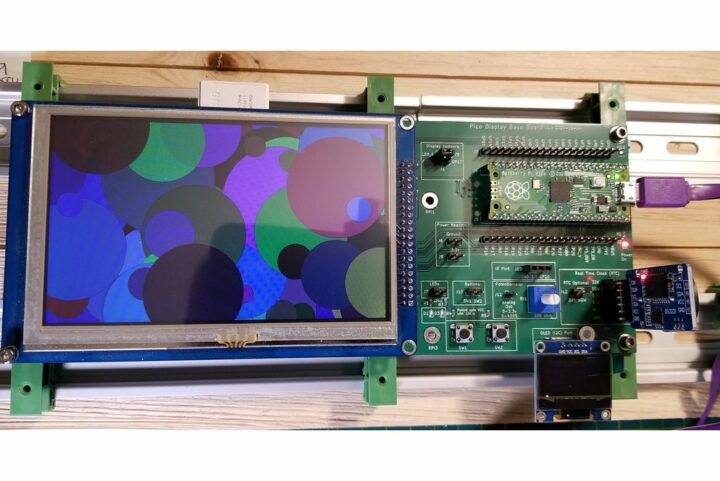The Pico Display Base Board is a printed circuit board from Applying Microcontroller Solutions that provides a platform for building Raspberry Pi Pico-based display projects. It works with a Raspberry Pi Pico board and an LCD screen based on the Solomon Systech SSD1963 display controller.
The Pico Display Base Board features a 40-pin header (Display Port) which connects to GPIO on the Pico to provide an 8-bit parallel interface for the display and SPI pins for the touchscreen and integrated SD card.
It supports various display sizes from 4.3 inches up to 7 inches. Displays up to five inches can be powered directly by the Pico. A jumper block on the board can be used to pass power to the LCD and wire the display’s optional flash chip to the Pico. A USB-C port on the board can provide an alternative power source for larger displays.
It also has male headers attached to the Pico for connecting onboard components such as the potentiometer, LEDs, and user buttons, as well as external devices including an OLED display, a DS3231 RTC module, and an Infrared Receiver (IR).
It was mainly created for building Raspberry Pi Pico-based LCD projects that require a touchscreen and an integrated SD card. The board layout emphasizes easy, simultaneous access to the display and other components. A 40-pin ribbon cable can be used for a more compact, portable product. Both the Raspberry Pi Pico and the Pico W are supported by the Pico Display Base Board.
The board can be programmed using either Thonny IDE (MicroPython) or Arduino IDE. It is also compatible with the PicoMite/WebMite firmware which are implementations of the MMBasic interpreter configured to run on the Pico. Other BASIC interpreters for the Pico include the PiccoloBASIC and JustPicoBasic. Documentation, demo programs, and firmware are hosted in the PicoDisplay GitHub repository.
The Pico Display Base Board is available for $14 on Tindie, the same price as the Car Base Board from the same company. The Pico microcontroller, LCD, and other external components are not included and must be purchased separately.

Tomisin is a writer specializing in hardware product reviews, comparisons, and explainers. He is very passionate about small form factor and single-board computers.
Support CNX Software! Donate via cryptocurrencies, become a Patron on Patreon, or purchase goods on Amazon or Aliexpress






